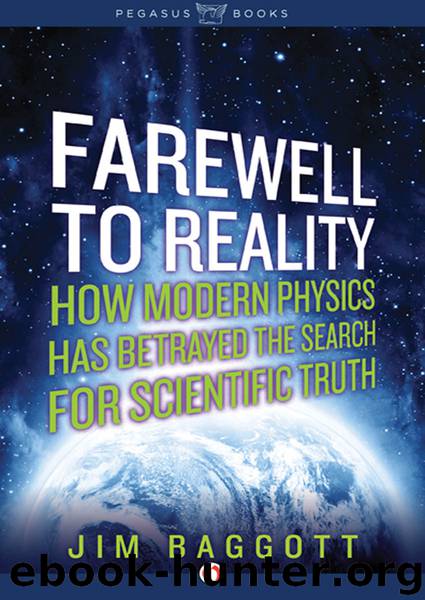Farewell to Reality by Jim Baggott

Author:Jim Baggott
Language: eng
Format: epub
Publisher: Open Road Integrated Media
SUSY and the hierarchy problem
It is already apparent that one of the most compelling arguments in favour of SUSY is that it provides a perfectly logical, natural resolution of the hierarchy problem, at least in terms of stabilizing the electro-weak Higgs mass.
Recall from the last chapter that the hierarchy problem has two principal manifestations. There is the inexplicable gulf between the energy scale of the weak force and electromagnetism and the Planck scale. And then there is the problem that quantum corrections to the Higgs mass should in principle cause it to mushroom in size all the way to the Planck mass, completely at odds with the electro-weak energy scale and recent experiments at the LHC which suggest a Higgs boson with a mass of 125 GeV.
At a stroke, SUSY eliminates the problems with the radiative corrections. The Higgs mass becomes inflated through interactions particularly with heavy virtual particles, such as virtual top quarks. The top quark is a fermion, and in the MSSM we must now include radiative corrections arising from interactions with its corresponding sfermion, the stop squark.
Now, I have very limited experience and virtually no ability as a mathematician. But what experience I do have allows me the following insight. If, when grappling with a complex set of mathematical equations, you are able to show that all the terms cancel beautifully and the answer is zero, the result is pure, unalloyed joy.
And this is what happens in SUSY. The positive contributions from radiative corrections arising from interactions with virtual particles are cancelled by negative contributions from interactions with virtual sparticles.*
The cancellation is not exact because, as I mentioned above, the symmetry between particles and sparticles cannot be exact. This is okay; the theory can tolerate some inexactness. However, force-fitting a light Higgs mass and broken supersymmetry does place some important constraints on the theory. Most importantly, the masses of many of the superpartners cannot be excessively large. If they exist, then they must possess masses of the order of a few hundred billion electron volts up to a trillion electron volts. Much heavier, and they couldn’t serve the purpose of stabilizing the Higgs at the observed mass, and hence establishing the scale of the weak force and electromagnetism.
This has important implications for the testability of the theory, which I will go on to examine below.
Download
This site does not store any files on its server. We only index and link to content provided by other sites. Please contact the content providers to delete copyright contents if any and email us, we'll remove relevant links or contents immediately.
Enlightenment Now: The Case for Reason, Science, Humanism, and Progress by Steven Pinker(7228)
A Journey Through Charms and Defence Against the Dark Arts (Harry Potter: A Journey Through…) by Pottermore Publishing(4781)
The Immortal Life of Henrietta Lacks by Rebecca Skloot(4525)
A Journey Through Divination and Astronomy by Publishing Pottermore(4344)
Elon Musk by Ashlee Vance(4028)
Origin Story: A Big History of Everything by David Christian(3648)
COSMOS by Carl Sagan(3554)
Alchemy and Alchemists by C. J. S. Thompson(3449)
Bad Pharma by Ben Goldacre(3355)
Enlightenment Now by Steven Pinker(3335)
Shadow of Night by Deborah Harkness(3302)
Inferior by Angela Saini(3276)
A Mind For Numbers: How to Excel at Math and Science (Even If You Flunked Algebra) by Barbara Oakley(3217)
Origin Story by David Christian(3147)
The Code Book by Simon Singh(3074)
Signature in the Cell: DNA and the Evidence for Intelligent Design by Stephen C. Meyer(3071)
The Elements by Theodore Gray(2998)
A Brief History of Time by Stephen Hawking(2960)
A Journey Through Potions and Herbology (A Journey Through…) by Pottermore Publishing(2826)
